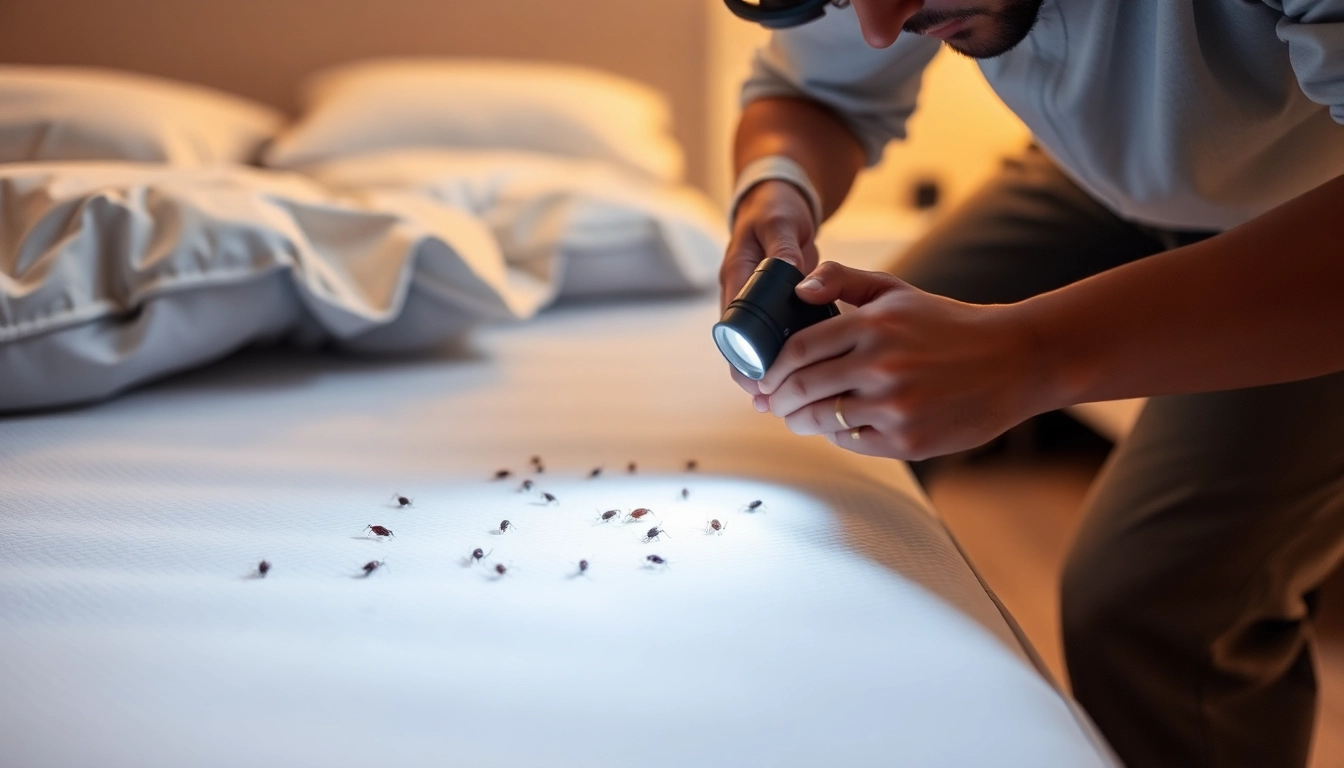Understanding Bed Bugs
What Are Bed Bugs?
Bed bugs are small, oval, reddish-brown insects that feed on the blood of humans and animals. They are nocturnal and typically hide in cracks and crevices during the day, emerging at night to feed. Adult bed bugs are approximately ¼ inch long, about the size of an apple seed, and can live for several months without a meal, making them particularly challenging to eliminate.
Signs of Infestation
Identifying an infestation is crucial for effective bed bug control. Common signs include:
- Itchy Bites: Often the first noticeable sign, bites typically appear in clusters or rows on the skin.
- Dark Spots: These are bed bug excrement stains, often found on bedding or in areas where bed bugs hide.
- Empty Shells: As bed bugs mature, they shed their exoskeletons, which can often be found near their hiding spots.
- Bed Bug Eggs: Tiny white eggs, about 1 mm in size, can be found in hidden areas.
Health Risks Associated with Bed Bugs
While bed bugs are not known to transmit diseases, their bites can lead to significant psychological distress, anxiety, and insomnia. Additionally, excessive scratching of bites can cause secondary infections. Therefore, addressing a bed bug infestation is not just about comfort; it’s also about protecting your health.
Preventive Measures for Bed Bug Control
Decluttering and Cleaning
One of the most effective methods to prevent bed bugs is to reduce clutter around your home. A clutter-free environment minimizes potential hiding spots for these pests. Regular cleaning, including vacuuming and dusting, can help identify and eliminate potential infestations before they intensify. Pay special attention to areas such as:
- Under beds and cushions
- Carpets and rugs
- Behind electrical outlets and light switch plates
- Other infrequently accessed spaces
Proper Use of Encasements
Using bed bug-proof mattress and box spring encasements is an essential prevention strategy. These encasements are designed to trap any existing bed bugs and prevent new infestations from taking hold. Ensure the encasements are durable and have zippers that cannot be penetrated by bed bugs. Encase your mattresses and box springs, and keep these encasements on for at least a year to ensure all bugs within die off.
Travel Tips to Avoid Bed Bugs
Travel is a common way bed bugs spread. To prevent bringing these pests home, consider the following tips when staying in hotels or other accommodations:
- Inspect the bed and surrounding furniture for any signs of bed bugs upon arrival.
- Keep luggage off the floor and away from the bed. Use a luggage rack or place bags on hard surfaces.
- After returning home, wash all clothing in hot water and dry on high heat.
DIY Bed Bug Control Methods
Effective Natural Remedies
For those looking to manage mild infestations without professional help, several natural remedies can be effective. These include:
- Essential Oils: Oils like tea tree, lavender, and peppermint are thought to repel bed bugs. Mix these oils with water to create a spraying solution for affected areas.
- Diatomaceous Earth: This natural powder can be sprinkled in areas where bed bugs hide. It works by dehydrating and ultimately killing the bugs that come into contact with it.
- Baking Soda: This common household item can be sprinkled on affected areas and vacuumed up after a few days. It may help dehydrate the bugs, though results may vary.
Heat Treatment Techniques
Bed bugs cannot survive extreme temperatures. Utilizing heat treatment involves raising the temperature in infested areas to at least 115°F (46°C) for an hour or more. You can apply heat treatment through:
- Steam Cleaners: Focus on seams, cracks, and crevices where bed bugs might hide.
- Heat Chambers: For belongings that cannot be washed, use specialized heating units available for pest control.
Using Pesticides Responsibly
If opting for chemical treatments, it’s vital to choose pesticides that are specifically labeled for bed bugs. Always read and follow the directions closely. For effective use:
- Apply pesticides in the evening, allowing exposure overnight for maximum effectiveness.
- Target cracks, crevices, and potential hiding places, and avoid treating bedding directly unless specifically indicated.
- Consider using a combination of chemical and non-chemical methods for better results.
Professional Bed Bug Extermination
When to Call an Exterminator
If a bed bug infestation is severe or persistent despite your efforts, it may be time to seek professional help. Indicators that you should call an exterminator include an increase in bite marks, significant blood stains on sheets, or a large number of visible bed bugs.
What to Expect from Professional Treatments
Professional extermination typically involves a thorough inspection followed by a multi-step treatment plan. Expect the following:
- A comprehensive assessment of your home, including hidden areas.
- Application of various treatments, including heat and pesticide methods.
- Follow-up visits to monitor the situation and ensure complete eradication.
Choosing the Right Pest Control Service
When selecting a pest control service, consider the following factors:
- Ensure the company is licensed and has a proven track record in dealing with bed bugs.
- Look for reviews and testimonials from previous clients.
- Evaluate their treatment methods – an integrated pest management (IPM) approach is often recommended.
Maintaining a Bed Bug-Free Environment
Routine Inspections
Regularly inspecting your home, especially after travel or new furniture purchases, can help catch bed bug populations early. Ensure you check common hiding spots, such as:
- Mattress seams
- Behind headboards
- Cracks in wallpaper or furniture
Long-Term Prevention Strategies
To ensure a lasting solution against bed bugs, implement the following strategies:
- Continuously monitor your living environment for early signs of bed bugs.
- Use encasements on mattresses and box springs as a long-term protective measure.
- Educate yourself and those living with you about bed bug identification and prevention tips.
Resources for Bed Bug Control
For further information on bed bug control, consider the following resources:
- U.S. Environmental Protection Agency (EPA) – They offer guidelines and insights for effective bed bug management.
- Healthline – Guides with step-by-step instructions on how to effectively eliminate bed bugs.
- Your local health department or pest control agency may also provide resources and information tailored to your community.



